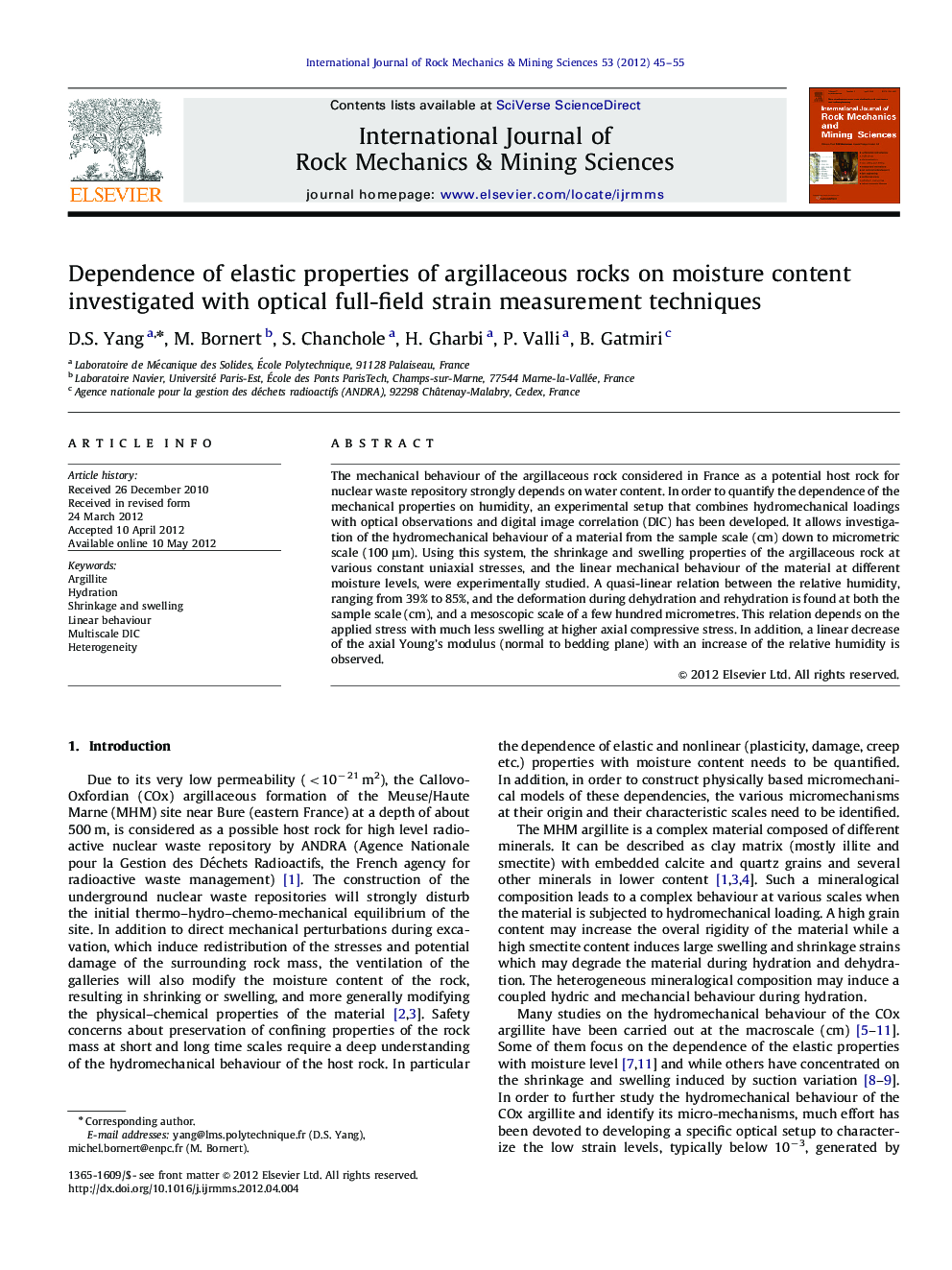| Article ID | Journal | Published Year | Pages | File Type |
|---|---|---|---|---|
| 809493 | International Journal of Rock Mechanics and Mining Sciences | 2012 | 11 Pages |
The mechanical behaviour of the argillaceous rock considered in France as a potential host rock for nuclear waste repository strongly depends on water content. In order to quantify the dependence of the mechanical properties on humidity, an experimental setup that combines hydromechanical loadings with optical observations and digital image correlation (DIC) has been developed. It allows investigation of the hydromechanical behaviour of a material from the sample scale (cm) down to micrometric scale (100 μm). Using this system, the shrinkage and swelling properties of the argillaceous rock at various constant uniaxial stresses, and the linear mechanical behaviour of the material at different moisture levels, were experimentally studied. A quasi-linear relation between the relative humidity, ranging from 39% to 85%, and the deformation during dehydration and rehydration is found at both the sample scale (cm), and a mesoscopic scale of a few hundred micrometres. This relation depends on the applied stress with much less swelling at higher axial compressive stress. In addition, a linear decrease of the axial Young's modulus (normal to bedding plane) with an increase of the relative humidity is observed.
► A specific setup under coupled HM conditions with optical observation is presented. ► A quasi-linear relation between RH and strain/modulus of the argillite is found. ► The reversible hydric strain during hydration and dehydration cycle at 2 MPa is found. ► The dependence of the hydration on the applied stress is revealed. ► The size of RVE is probably of the order of a few hundred micrometres.
